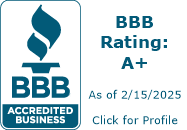
Investors flipped more than 207,000 single-family houses and condos in the U.S. last year. More than 138,000 investors flipped a home last year, the most since 2007. This represents 5.9% of all single family and condo sales in 2017. Why is this metric important? How much leverage are the home flippers using? What does this mean for your real estate values?
Before getting into the details on home flipping, it is important to discuss the amount of leverage being used to facilitate this business model. Remember, leverage can drastically increase returns in good markets and can also drastically amplify losses when markets turn bad.
Leverage
Thirty-five percent of all homes were financed using leverage. The dollar volume of flipped homes is up 27% from last year to 12.1 billion. This is the highest level since 2007 (source Attom Data). How did they determine the amount of flips financed? Attom Data looked at all properties sold within one year that had a recorded mortgage when the home was purchased. This all sounds plausible, but there is a big hole they are missing?
The amount of Leverage is considerably higher!
Attom Data looked at all properties sold within one year that used financing to derive the percentage of homes flipped using financing. Unfortunately, this reasoning is severely flawed. Let’s say someone wants to buy a house to flip. There are various avenues for financing. Attom only captures one of the financing methods.
- Get a loan on the house you are buying (this is the only item Attom captured)
- Pay cash for a home and then after closing put financing on it
- Get a loan on another investment property you own via a cash out refinance
- Get a home equity loan or a cash out refinance on your current primary residence
- Leverage other assets; for example, borrower against a 401k, life insurance policy, stocks, etc…
The metric that 35% of all properties used financing is grossly understating the leverage being used in the market. There is no real way to track but based on our call volume of hard money loans, I would suspect that this number is closer to sixty to seventy percent.
Why focus on leverage?
Leverage is an excellent tool to help amplify returns. You can basically do more transactions than otherwise possible with the use of additional funds from lenders/investors/etc… Unfortunately, leverage has a dark side. Just as leverage can be used to amplify positive returns, it can also be used to substantially increase losses. Let’s look at two scenarios, one using leverage and one using no leverage.
- Unleveraged Borrower: For example, let’s say someone had $100k to invest. That person could go out and buy a single-family home for cash, fix it up and sell it. If the market turns they are stuck with a house that they can rent or hold onto until the market recovers. This is not optimal, but the investor at the end of the day has an option to wait the cycle out to optimize returns.
- Leveraged Borrower: Let’s assume that same investor, instead of buying one 100k house, decides he/she is going to buy 10 houses. They will put 10k down on each house and use 90% financing. This is a great strategy when they can easily sell the houses. When the market turns, the lenders of the financing on each house will want their funds as most hard money loans are short term (Fairview is unique that we do 3-5 year loans as our loan objective is not flipping). Even if the lenders/investors worked with the borrower, the borrower would be unable to cash flow ten homes at the same time with high leverage; rents would be less than the loan payments. Furthermore, in a market correction values would decline, and the borrower would quickly be underwater on the property. We saw in the last recession that many borrowers just walked away when their equity position was underwater. The lender would foreclose further driving down values in the area as they want to ‘fire-sale” the property to recoup their investment and liquidity. This is a short version of what occurred in the last downturn. In the case of leverage, the investor that used a considerable amount of leverage will likely lose almost everything.
- What about the lender? The lender could follow the same path as the borrower choosing to leverage their portfolio or fund in cash. As a lender, I get calls all the time to see if I would like to borrower money. Basically, a bank or other lender would allow me to pledge my note as security. They would then lend me 80% of the note amount. I could then go out and amplify my returns by lending out more money. The vast majority of lenders use leverage to increase their returns. At Fairview, we learned first hand in the last recession that leverage worked great when markets were going up and on the flip side almost killed us when the markets declined. Lenders, just like borrowers above, will end up in a liquidity crunch when the markets turn. We learned our lesson and fund all our loans with cash and no leverage!
How will flips impact you?
Flips account for almost 6% of all sales throughout the country. In certain areas flips are substantially higher; for example, flips are over 13% in Memphis and 10% in Las Vegas. Flips are great when the economy is going up. Investors rehabilitate houses, transition neighborhoods, and help increase property values. The problem happens when the market slows. Ironically both markets with high proportions of flips got hit considerably harder than other areas during the last recession. These same areas with high rates of flips also have high rates of leverage for both the borrower and the lender which amplifies the market volatility.
Why should you be worried?
If you own a property in an area with a high concentration of flips, your probability of price declines is considerably greater. What happens if all the flips must sell in a short period of time as prices begin declining? If 10% of all houses go on the market while at the same time demand wanes your value is impacted. We saw this back in 2007 when the real estate market began to collapse. Even if you’re neighborhood has an “average” number of flips (6% is the national average) values will still decline just not as much. A good example is Denver which had about an average number of flips. Although during the recession values went down only 10-20%, much less than the 50% in areas like Vegas, lenders and borrowers using leverage still lost a ton of money as they were unable to weather the correction.
Now is not the time to use leverage!
Although no one knows exactly when the next recession will occur, most economists agree that we are somewhere near the “tail” of this economic cycle. This is a bit ironic; in 06/07 the amount of leverage spiked right before the great fall. This week, we just hit new highs for leverage on flipping.
The party will end badly
It is comical how both parties in Washington think that we learned something from the last recession. Dodd Frank was enacted along with various other laws to help prevent the same meltdown as before. Unfortunately, these regulations will have minimal impact, if any, in the next crisis. For example, the growth in peer to peer lending has been astronomical (not covered by Dodd Frank). Much of this peer to peer lending has been used to finance flippers. This is just one example of the byproduct of the banking laws. The banking laws have moved risk/leverage to other avenues. Don’t get me wrong, the banks will not be immune in this recession. Although banks might not be directly making the loans, they have lines out to hard money lenders/ private lenders that are. At the end of the day many of these lenders will fail and the banks will be back to where they were in the last recession!
Just like in the last recession until *#%* hits the fan nobody really knows how this leverage has been “allocated” throughout the economy as securities are created, banks are providing lines, and grandma is loaning her retirement fund through a peer to peer site. However, we do know that leverage will amplify losses throughout the economy and impact borrowers, lenders, and property owners. At this stage in the cycle, the flip should be dead. This is far from what is occurring today as flips just hit all-time highs. As Alan Greenspan, the former federal reserve chief, asked: Is the market exhibiting “irrational exuberance” before the bubble pops?
Sources/Additional Reading
- https://www.bloomberg.com/news/articles/2018-03-08/home-flippers-pile-into-the-u-s-market-scoring-higher-profits
- https://www.nytimes.com/2017/10/20/your-money/house-flipping-loans.html
- https://www.attomdata.com/news/home-flipping/2017-u-s-home-flipping-report/
- https://www.bloomberg.com/view/articles/2018-03-08/the-next-recession-may-come-as-a-surprise
I need your help!
Don’t worry, I’m not asking you to wire money to your long-lost cousin that is going to give you a million dollars if you just send them your bank account! I do need your help though, please like and share our articles it would be greatly appreciated.
Written by Glen Weinberg, COO/ VP Fairview Commercial Lending. Glen has been published as an expert in hard money lending, real estate valuation, financing, and various other real estate topics in the Colorado Real Estate Journal, the CO Biz Magazine, The Denver Post, The Scotsman mortgage broker guide, Mortgage Professional America and various other national publications.
Fairview is a hard money lender specializing in private money loans / non-bank real estate loans in Georgia, Colorado, Illinois, and Florida. They are recognized in the industry as the leader in hard money lending with no upfront fees or any other games. Learn more about Hard Money Lending through our free Hard Money Guide. To get started on a loan all they need is their simple one page application (no upfront fees or other games).
